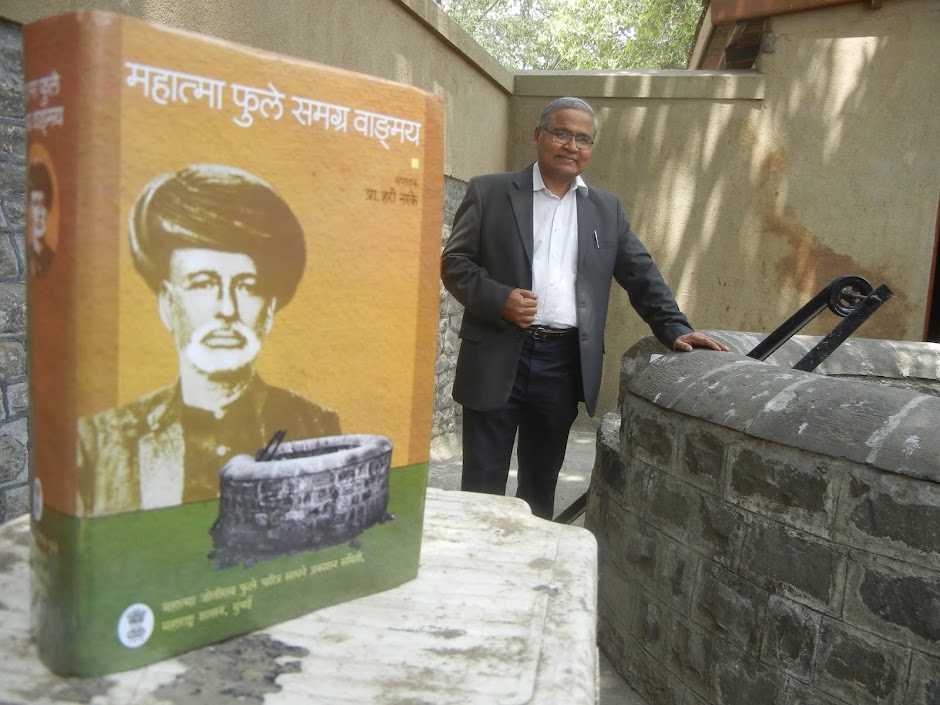Poignant images
FRIDAY REVIEW » THEATRE, THE HINDU, 23 JAN.2014,DIWAN SINGH BAJELI
Updated: January 23, 2014 19:26 IST
A Marathi version of “The Caucasian Chalk Circle” introduced scenes from “Before the Law” to highlight the dichotomy between two great 20th Century thinkers.
Among Bertolt Brecht’s masterpieces his two plays, “The Good Woman of Setzuan” and “The Caucasian Chalk Circle”, are remarkable for vigour and morality with richly drawn dramatic personae. Both have been widely performed in India. At the Bharat Rang Mahotsav we had another opportunity to watch “The Caucasian Chalk Circle”, this time in a Marathi version titled “Ringan”, which was presented by Lalit Kala Kendra University of Pune, Maharashtra, at Shri Ram Centre recently.
The play is directed by Praveen Bhole who has also done the Marathi translation. Within the framework of epic theatre, Bhole has incorporated some innovative features into his production and has created a few characters. He has reduced the number of songs and he attempts to convey irony and the predicament of humanity through puppets and the character of the author. This character remains most of the time on the stage, noting down his observations on the scenes in progress and often speaking briefly. Of course, the chorus is here to demonstrate the contradictions in contemporary society. The director has also made an attempt to juxtapose Franz Kafka’s “Before the Law” with the court scenes of “The Caucasian Chalk Circle” to highlight the fundamental dichotomy between the artistic visions of two great visionaries of the 20th Century. Bhole shows from Kafka’s story a peasant waiting all his life in vain seeking entry to the law through an open door. He juxtaposes it with the court scene in Brecht’s play where Gurusha finally gets justice in the cruel world. Kafka’s story depicts the terrible reality in which humanity is not able to liberate itself from the abyss of exploitation. Brecht offers us an optimistic view of life, affirming the victory of values.
We see a civil war breaking out in a certain country. The rebel forces are determined to arrest the family of the ousted governor. There is chaos in the palace with the rebel forces encircling it. The governor’s wife is more concerned with collecting her costly clothes and belongings and least bothered about the safety of her infant son. A lowly maid Gurusha takes hold of the little baby, risking her life, and manages to disappear before the rebel forces kill the royal scion. The dramatic action shifts from one locale to another, illustrating the vicissitudes Gurusha has to undergo to save the little one. The bloodthirsty soldiers are desperately chasing her. Forgetting her own safety and that of her lover, a soldier, she is ready to go to any extent to protect the child. Brave, dynamic and endowed with common sense, she manages to outwit the soldiers hounding her. At the cost of her honour and the pledge of marriage she has given to her lover, she agrees to marry a man on his deathbed to give the baby a name, social respect and the opportunity to grow in a better condition. Her dilemma intensifies many times when the man appears to be merely feigning illness to escape conscription in the army.
One of the scenes where Gurusha with the baby on her back crosses the badly damaged bridge over a river is very effectively enacted. As soon as she reaches the other bank of the river, the bridge tumbles down with a crash on the swiftly flowing river, with her pursuer watching dismayed from the opposite bank. Similarly, in the scene where she is washing clothes on the riverbank, her long lost lover, back from the army, calls out exultantly from the opposite bank, but suddenly sees the child nearby and leaves, crestfallen. The scene is imbued with irony.
Another important character in the play is Azdak, a rogue whose bizarre sense of justice, helped by the unique device of a chalk circle, helps Gurusha regain her happiness. The costumes are imaginatively designed. For Gurusha and peasant characters, earthy colours are used while the royalty are in gaudy colours with masks to reflect the hypocritical character of the class.
Pramiti Narke’s portrayal of Gurusha is convincing. Her Gurusha is young and dynamic with intense inner motivation to protect the infant. Naresh Dongarwar as Azdak is eccentric and inimitable, springing surprises with his judgements.




No comments:
Post a Comment